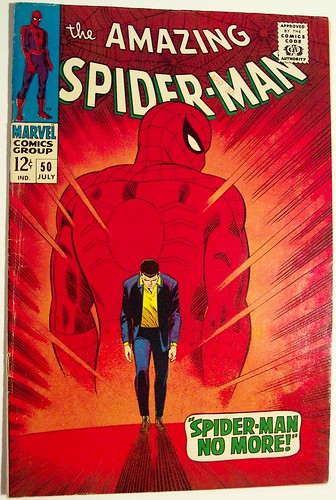
I can’t speak for every teacher, but I’m fairly sure I’m not the only instructor out there who dreads reading research papers. It’s not the extra time that goes into commenting on and grading research papers that I have a problem with (although that’s certainly a factor). No, what really makes me want to put off looking at those stacks of essays for as long as humanly possible is how mind-numbingly dull most of the paper topics are.
Somehow we’ve become indoctrinated with the idea that research papers have to be boring.
When did we learn that a dry, un-engaging writing style was a necessary requirement of academic writing? I’d like to place the blame solely on high school, but I’m afraid that even the professional journals we refer our students to in college perpetuate this misperception of what an academic paper should sound like.
Looking at my stack of research paper proposals, I have 8 papers on global warming and 5 on illegal immigration to look forward to… in just one of my classes. Maybe 2 or 3 of those students feel passionately about those topics, but I’m willing to bet that not all 15 students care about (or are even particularly interested in) those issues. So…
Why do students choose boring topics?
- They think the topic will guarantee they get a good grade.
Actually, the more interested you are in an issue, the better you will write about that issue. Interest alone doesn’t guarantee good writing, but it makes the process of researching and writing about a topic much easier and more enjoyable. Let’s face it – when you couldn’t care less about an essay topic, you’re not going to feel inclined to invest much effort in it.
While it is true that you could be disinterested in a topic and still craft a beautiful essay about it, the process of writing that paper would probably have been less than enjoyable. College students in this day and age have so many demands on their time that they have to be selective about how they spend it. Writing a research paper on a topic that you aren’t passionate about or don’t want to learn more about is painful for both you and your teacher.
We’re all about multitasking in the 21th century; let your essays do double duty too.
- They can’t think of anything else to write about.
When you choose a run-of-the-mill topic just because it’s common (e.g., global warming, health care reform, illegal immigration), you’re actually doing yourself a disservice. It would be much easier on everyone (including the teacher) if the essay topic were assigned. The instructor makes you come up with your own, though, for a reason.
Employers don’t stand behind you looking over your shoulder while you’re on the job. They may if you’re in training, but after that period is over, you’re on your own. You’ll be given a task and told to complete it but very rarely will you be told step-by-step exactly how to go about completing your assignment. It’s inefficient to have an employee who needs their hand held in order to get anything done.
As valuable as being a self-starter is to employers, the ability to come up with innovative ideas for improving the company is just as important. Coming up with a research paper topic is supposed to be challenging because it’s an exercise in intellectual independence.
How to choose a good topic:
Choose something you’re interested in. That’s it. That’s the secret essay topic choosing technique passed down by nerds for centuries. If you like your paper, your paper will like you back.
Unless you’re used to filling out those “50 Random Things About Myself” memes all the time, chances are it’s been a while since the last time you sat down and thought about what it is that interests you. No worries – the way to figure out your interests (for those who have no idea what they like) is to take stock of what you DO.
When you get together with your friends, what do you usually talk about? Is there a t.v. show you like watching? Do you have any hobbies? Do you (or anyone in your family) have a special ability/quirk that you could hone in on as a possible paper topic?
Take me, for example. My twin and I love watching horror movies. Good ones, bad ones, high budget ones, low budget ones…we’ve seen them all. That affinity for horror movies has great potential when it comes to essay topics. Do good horror movies have anything in common? Do the bad ones share a common denominator as well? Is there a position I can take about what factors need to be present in a horror movie for it to be good/profitable (or what shouldn’t be included in a horror movie)? All the evidence I need to back up my claims are at the local Blockbuster and online.
I like comic books too. They’re a veritable trove when it comes to controversial topics for an essay. Just earlier this year the way Batman was killed off was a mockery of everything that made him Batman! Grrr! I could go on for pages about how wrong his death was… stick a few citations here and there and I’d have a persuasive research paper.
Try and think about what topics make you stand up on a soapbox. Not only will you have a better chance of writing well, you’ll also be doing yourself a favor when it comes to essay length. When you don’t know anything about a topic and don’t want to know anything about it, it’s awfully difficult to meet those paper length requirements.
Photo credit: Zen



















